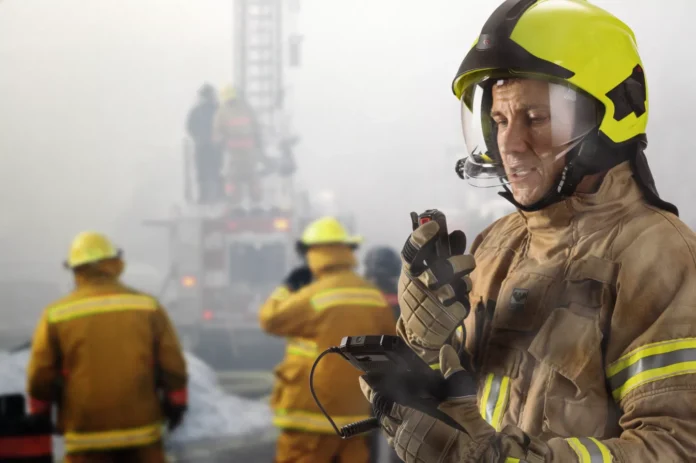What to believe? Who to believe? (We’ll write about this one day.) But, just because it’s modish, and because it presents another (!) way to segment the non-traditional new-cellular comms market, new research reckons the combined market for public and private LTE and 5G for critical communications will be worth $5.5 billion globally by the end of 2026, up 17 percent per annum on a compound (CAGR) basis (and 57 percent in total revenue terms) from $3.4 billion at the end of 2023.
Tech forecasting firm SNS Telecom & IT has issued two reports (across 5,000 pages!) about the private enterprise LTE and 5G market and public safety LTE and 5G market respectively, both covering 2023-2030, and also combined them as a single package, discussing LTE and 5G for critical communications. It might be noted its library of reports presents the same subject (3GPP-based private cellular), effectively, in a whole bunch of different ways.
Anyway, the long-and-short of it is that LTE and 5G are the new king-technologies in the critical comms market, reckons SNS Telecom & IT. It states: “LTE and 5G are increasingly gaining recognition as an all-inclusive critical comms platform for the delivery of mobile broadband and industrial IoT capabilities, as well as mission-critical push-to-talk (MCPTT) voice functionality comparable to that offered by traditional LMR (Land Mobile Radio) systems.”
Its point is that, where LTE and 5G were once deployed as complementary high-bandwidth broadband technologies to augment existing voice-centric LMR networks, they are now being used also for mission-critical everything (acronymized as MCX), such as push-to-talk/video/data and isolated public-safety comms (IOPS), as well as delivering higher-fidelity features like high-power user equipment (HPUE), ultra-reliable low-latency comms (URLLC), time-sensitive networking (TSN), and satellite (non-terrestrial network; NTN) integration
SNS Telecom & IT says the cellular-based critical networks market is being seized on by public safety agencies, smart grid operators, railway operators (as part of the FRMCS push), and sundry Industry 4.0 initiatives. In the process, LTE and 5G are sweeping aside traditional critical comms technologies like P25 (Project 25) and TETRA. This has happened, initially, with hybrid public-private 3GPP networks, operated as virtual networks (MVNOs) or as standalone parts of public operator networks, for public safety and critical infrastructure.
It lists nationwide public protection and disaster relief (PPDR) broadband platforms such as the FirstNet system in the US, Safe-Net in South Korea, RRF in France, and VIRVE 2.0 in Finland, as well as the moves to modernise dedicated infrastructure by utilities and rail companies, and the demand for (mostly) edge-based private networks by in airports, ports, oil and gas facilities, power plants, substations, wind farms, mines, factories, and warehouses.
It writes: “Even the most sophisticated digital LMR networks are unable to support mobile broadband and data-driven industrial IoT applications that have become vital for public safety, defence, utilities, transportation, oil and gas, mining and other segments of the critical communications industry. Anyway, 5,000 pages on the topic is available by following the above links, and searching up the contact info.

